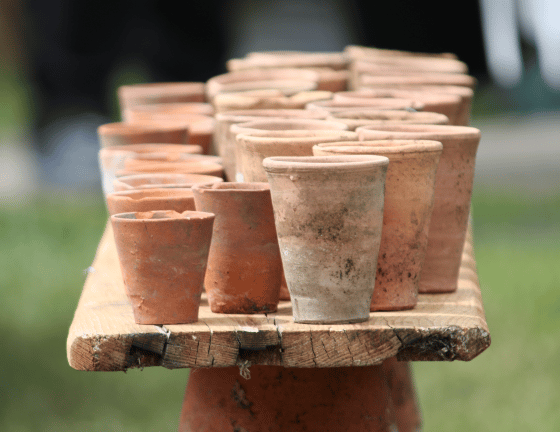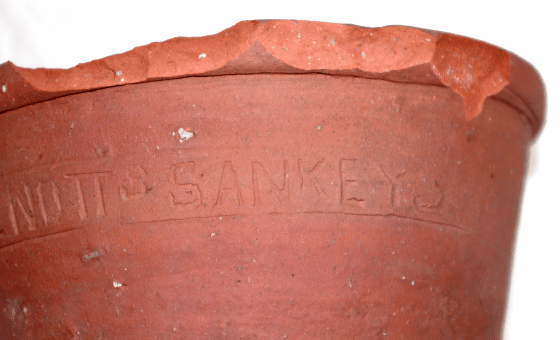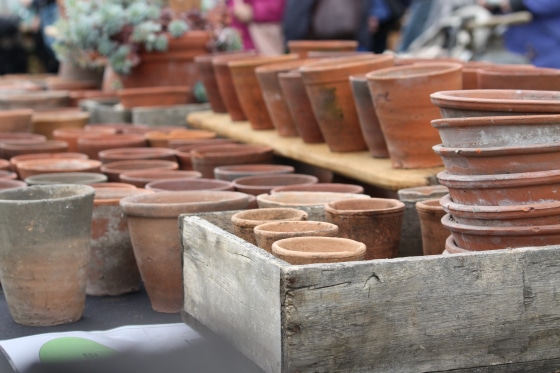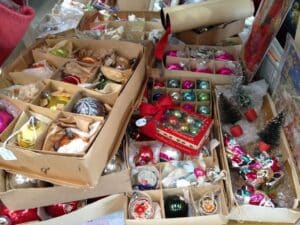Vintage Obsession #20: Interiors Journalist (and Vintage Shopping Addict), Ellie Tennant 
The teetering stack of terracotta Victorian flower pots in my allotment shed grows whenever I spot old ‘clays’ at an antiques fair. They can cost as little as £2 each – great value when you consider that they’re far better quality than modern, mass-produced equivalents.
Despite being older, you see, they’re stronger. ‘Modern pots in my experience don’t last long,’ agrees Richard Holmes, who runs ‘Long Toms’ from his home in the Potteries, supplying antique, handmade flower pots to collectors, interior designers and gardeners. ‘Unlike today’s pots, Victorian ones were fired at very high temperatures and, as a result, can survive the harshest winters,’ he explains. ‘Modern clay often has air pockets in it, too, so new pots often shatter in the first frost.’
When he was a horticulture student, Richard saved a batch of antique pots from being buried in a hole during the ruthless clearing out of a Victorian greenhouse and has been besotted with pots ever since. He’s amassed an enormous collection over the years, ranging from tiny ‘thumb’ pots for seedlings to taller, tapered ‘Long Toms’ for Auriculas. His biggest haul to date was from an old sweet pea nursery that had fallen derelict almost fifty years ago and contained hundreds of half-buried, abandoned and forgotten pots.
‘I love their texture, the way Autumnal light sits on them and their non-uniform shapes,’ he explains. ‘They lift the spirits and make you smile. It is the many hands that have nurtured them as well as the plants that have grown inside them, their chalky lime patina, their smell and their wounds from years of use that makes them so appealing. The only drawback is that spiders often lurk inside them!’
Mostly manufactured by ‘Sankey of Bulwell’ in Nottinghamshire or ‘Ward of Darlaston’ in Staffordshire, Victorian flower pots were made of high quality clay but hand-thrown, quickly, without too much care – so they have plenty of character; they’re irregular, slap-dash, rippled, often marked with a potter’s finger prints and stamped with the name of the pottery that produced them.
I’m always drawn to these stamped pots with rough, impressed lettering on their exteriors but, sadly, despite these maker’s marks, the history of flowerpot manufacturing is somewhat hazy. They were everyday items that weren’t valued, celebrated or appreciated and, when the Sankey of Bulwell pottery burnt down in the 1960s, all records of clay production were lost forever in the fire.
If you’re not a gardener, you can find a home for a flower pot inside, instead – for fresh herbs on the kitchen windowsill, to hold washing-up brushes beside the sink – or for pens on your desk, and that’s the end of Vintage Obsession #20.









